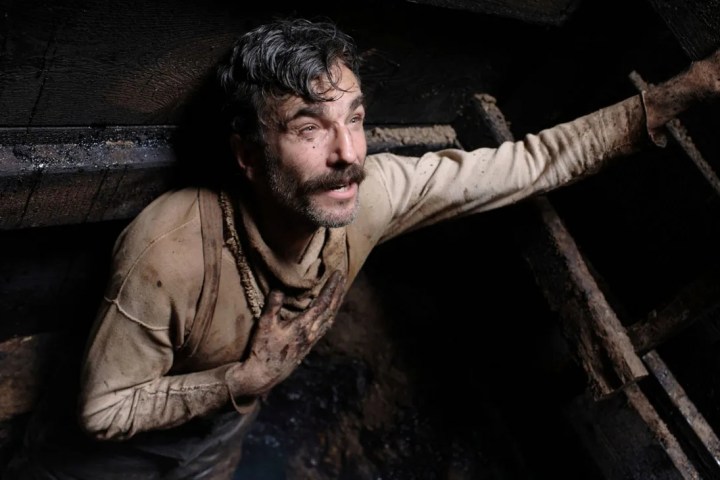
Paul Thomas Anderson has never made a bad movie. He’s never even made a subpar one. You can’t say that about a lot of filmmakers, but you can about Anderson. That fact makes the mere act of trying to rank his films a daunting task. He’s made more masterful, indelible movies than almost any other filmmaker of the past 30 years, and the distance between some of those film is so small that one must squint to even see it.
Anderson is currently in the midst of filming his new, Leonardo DiCaprio- and Regina Hall-led production, so now seems like as good a time as any to celebrate Anderson’s filmography the only way the internet knows how: by ranking his feature efforts from best to worst. Be warned, though: Any ranking of Anderson’s films will inevitably be based on both objective quality and personal taste, including this one.
9. Hard Eight (1996)

Hard Eight is the film that got Paul Thomas Anderson into Hollywood, and it works well on nearly every level. There’s a straightforwardness to the way it unfolds that lends it a blunt-edged kind of effectiveness. Despite his inexperience at the time, Anderson also had the wisdom to sit back and actually let Hard Eight be anchored by Philip Baker Hall’s quietly commanding lead turn as its soft-spoken lead, Sydney.
The resulting film is an undeniably first-rate directorial debut, but watching it now is like watching a stadium rock band play an acoustic set. There’s nothing inherently wrong with what you’re listening to, but it doesn’t quite rip the way you know it could.
8. The Master (2012)

Rigorous to a fault, The Master is one of the most technically astounding films of this century. It’s both a not-so-subtle exploration of the birth of Scientology and yet another story from Anderson about two unbending figures challenging and falling sideways in love with each other. Mihai Mălaimare Jr.’s sun-soaked, 65mm photography fills the film with some of the most stunning images that Anderson has ever had a hand in producing, and Joaquin Phoenix and Philip Seymour Hoffman’s dual lead performances rank high among the most awe-inspiring that the filmmaker has ever captured on-screen (a compliment of the highest order).
And yet, when everything is said and done, The Master emerges as slightly less than the sum of its parts. When the parts in question are as astonishing as they are here, that’s not the worst thing, but it is enough to prevent The Master from securing a higher spot on this list.
7. Licorice Pizza (2021)

The shaggiest movie that Paul Thomas Anderson has ever made, Licorice Pizza isn’t so much a coming-of-age story as it is an episodic series of adventures involving a young boy who desperately wants to grow up and a late-20s girl hell-bent on ignoring that she has. The film, Anderson’s latest love letter to the version of the San Fernando Valley that he grew up in, is a breezy, bubbly comedy that could be enjoyed solely for the wacky adventures that its leads get into — most of which involve them running into scene-stealing heavy hitters like Bradley Cooper and Harriet Sansom Harris.
Anyone eager to get something more out of it, though, won’t have to look hard to recognize the thorny struggle Alana Haim’s character feels between wanting to embrace her age and stay young forever. That conflict reveals itself in a heartbreaking, Benny Safdie-led last-minute scene, which, in turn, casts Licorice Pizza’s seemingly fairy tale ending in a far more complex, melancholic light.
6. Inherent Vice (2014)

A stoner detective comedy in the same vein as The Long Goodbye and The Big Lebowski, Inherent Vice was written off by many as a minor effort when it was originally released after the more obviously impressive There Will Be Blood and The Master. The years, however, have been kind to Inherent Vice. Its haziness continues to seem less like a crutch and more like a defining feature, one that both purposefully evokes the confusion of the film’s early 1970s California setting and necessarily dulls the edges of the heartbreak and horror that populates its story.
Repeat viewings reveal the sadness lurking within Anderson’s ambitious Thomas Pynchon adaptation and only make one further appreciate the misty-eyed way that it simultaneously embraces and eulogizes a time when it felt like love might still prevail. The California of the past seems to continually haunt both the film’s characters and Anderson himself, and that’s why Inherent Vice resonates as deeply as it does.
5. Magnolia (1999)

An expansive, messy exploration of grief and loss set against the backdrop of a rain-soaked, late 1090s San Fernando Valley, Magnolia is the least categorizable film of PTA’s career. It’s indulgent and at times grating, but never not spellbinding. To watch it is to watch an angst-riddled, grief-stricken director — coming off the breakout success of a lifetime — try to create his magnum opus using nothing but his own instincts and unbridled confidence. It’d be a stretch now to call Magnolia the most important work of Anderson’s career, but it does seem to still be his most singular.
No one else could have made Magnolia. It’s far too raw, personal, and frantic to have been produced by anyone else, and that just makes the ease with which it gets you caught up in its own overwhelming swirl of emotions all the more impressive. They gradually amass and then, almost without warning, drop on you from the sky — the full weight of Anderson’s vision hitting you with the same force of an anvil (or a wave of frogs).
4. Boogie Nights (1997)

Boogie Nights is the film that truly put PTA on the map. Nearly 30 years later, it’s still not difficult to see why. A California-inspired riff on Goodfellas, Anderson’s sophomore effort is a stylistically commanding crime saga set during the rise and fall (i.e., move to video) of the porn industry in the late 1970s and early ’80s. Made in the wake of the director’s conflict-plagued experience behind the scenes of Hard Eight, Anderson went into Boogie Nights with a chip on his shoulder and a desire to cement his place as one of the most formidable filmmakers of his generation.
He did just that — delivering a propulsive, coked-up portrait of one of Hollywood’s oddest found families that feels like both a manifestation of all of PTA’s earliest influences and a completely original artistic expression. Every one of its tracking shots feels indebted to Martin Scorsese and its ensemble structure is an undeniable result of Anderson’s devotion to Robert Altman, but only he could have made Boogie Nights so simultaneously seedy and glamorous, hilarious and sobering.
3. Punch-Drunk Love (2002)

Punch-Drunk Love shouldn’t be as good as it is. It’s an unflinchingly sweet early 2000s rom-com that stars Adam Sandler in a role that, at the time, many presumed he could never pull off. At every turn, though, Punch-Drunk Love defies expectation. PTA has repeatedly said that the film was inspired by his own, simultaneous consumption of classic Astaire and Rogers musicals and Sandler’s mid-1990s comedies, and you can feel that.
The film vibrates with the same underlying rage present in Boogie Nights and Magnolia, and yet there’s an infectious musicality to Punch-Drunk Love that constantly propels it forward. Sandler is mesmerizing as its violently insecure lead, and Anderson wisely juxtaposes the anxiety of his protagonist against a comic absurdity and overwhelming level of romantic sweetness. The result is a rom-com that is alternately ridiculous and startling, and which has the capacity to lift you up the same way that it does its long-isolated hero.
2. There Will Be Blood (2007)

If Boogie Nights and Magnolia announced Paul Thomas Anderson as a promising filmmaker in the 1990s, it was There Will Be Blood that secured his place among the greatest voices of cinema history. Centered around Daniel Day-Lewis’ towering, Oscar-winning lead performance, the film is an enthralling, fittingly blackhearted drama about the war between religion and commerce that America was, at the very least, partly founded on. As both a battle of wills and an exploration of the corrosiveness of American greed, There Will Be Blood is practically unrivaled in both power and insight, and there’s nary a fault to be found throughout its 158-minute runtime.
It’s a timeless epic that visually connects back to the similarly gargantuan Hollywood productions of old and yet pulses with PTA’s decidedly modern voice and acidic sense of humor. Its ending is one of unholy intensity, itself both a fulfillment of the promise made by the film’s title and a final, bone-crunching coup de grâce that brings There Will Be Blood‘s story to an appropriately deranged, unforgettable conclusion.
1. Phantom Thread (2017)

Many will likely always regard There Will Be Blood as Paul Thomas Anderson’s career-defining masterpiece. As was stated in the opening paragraphs of this piece, there’s not much that can be said to refute that opinion, either. Of all the films that Anderson has made, though, none carry quite as much unlikely power as Phantom Thread. A gothic romance about a young woman and a couture dressmaker who fall in love in the 1950s, the film is, like There Will Be Blood and so many of Anderson’s other movies, essentially a battle of wills. But it’s so much more than that, too. It’s a comedy, yes, as well as an expression of frustration over one’s own stubborn ways and a moving exploration of the yearning even the most unbending of us feel to be close to another.
It’s a man stumbling through the crowded bodies of a New Year’s Eve party desperate to find the woman he loves, only to emerge unable, once again, to relent just enough to dance with her. It is, in other words, a full-blooded romance, and the conclusion it arrives at is sick and sweet — contradictory in ways that shouldn’t work or make sense. And yet, like so many of Anderson’s greatest dramatic left-turns, it does. That’s because Phantom Thread crackles with a magic that is rare even in a director like PTA’s filmography. The more time you spend with it, the deeper under its spell you fall.




